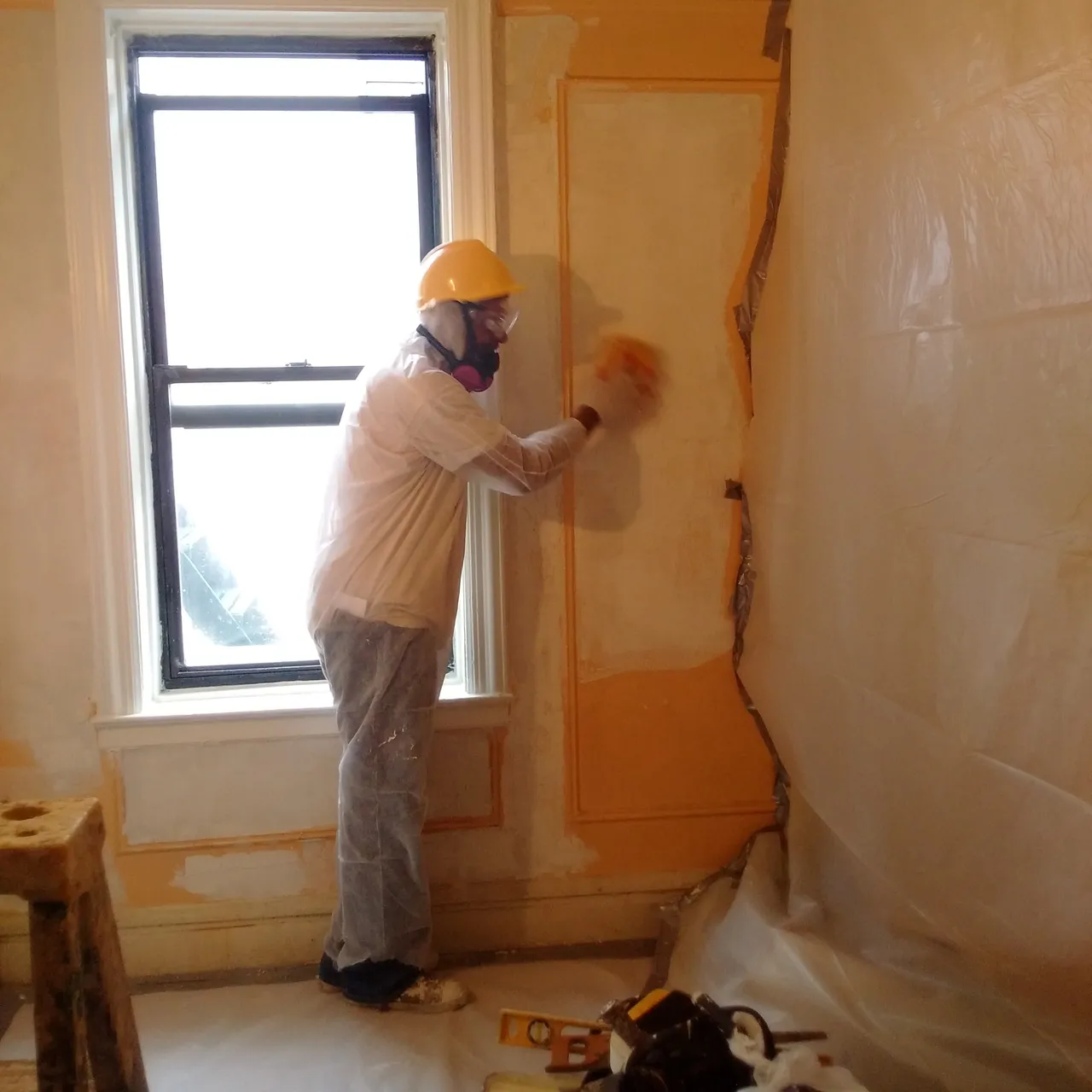NYC Lead Removal Contractors-- Obtain Safe and Efficient Solutions
NYC Lead Removal Contractors-- Obtain Safe and Efficient Solutions
Blog Article
Comprehensive Overview on Effective Lead Offense Removal Techniques
In the world of environmental safety and security, dealing with lead infractions demands a careful and structured strategy. This detailed guide starts by highlighting the critical initial actions of recognizing lead dangers via sophisticated analysis and testing techniques. The guide clarifies on the value of sticking to rigorous safety procedures throughout the elimination process, consisting of the use of proper PPE and isolating impacted locations.
Identifying Lead Hazards
Determining lead hazards is a critical first action in minimizing the risks associated with lead direct exposure. Lead, a harmful metal, can be existing in different ecological mediums, including paint, soil, water, and dirt.
The preliminary phase in determining lead risks entails recognizing common lead resources within the constructed atmosphere. Frameworks built prior to 1978 are especially prone due to the widespread usage of lead-based paint during that duration. Additionally, soil contamination can occur from deteriorating outside paint, industrial exhausts, or historical usage of leaded gas.
An additional considerable source is lead piping and pipes fixtures, which can leach lead right into alcohol consumption water. Durable goods such as playthings, porcelains, and imported items might likewise include dangerous lead levels. Especially, work atmospheres and leisure activities including lead can track impurities into homes.
Assessment and Testing
When addressing lead threats, efficient analysis and screening are vital. First assessment commonly includes a visual evaluation to recognize possible lead sources, such as degrading paint or infected dirt.

Dirt clean sampling is one more essential method, particularly in household setups. By collecting examples from floorings, windowsills, and other surface areas, this approach gives understandings right into potential direct exposure risks. Moreover, dirt testing around building perimeters is important to spot lead contamination that could position risks, specifically to youngsters.
Safe Removal Procedures
Upon finishing thorough assessment and testing, implementing safe elimination procedures is the next crucial stage in dealing with lead hazards. This procedure guarantees that lead-contaminated products are effectively and securely removed, minimizing risk to both employees and citizens. The very first step entails isolating the damaged area using plastic sheet and appropriate sealing strategies to stop the spread of lead dirt.
Workers should put on appropriate personal protective equipment (PPE), consisting of respirators, gloves, and disposable coveralls, to mitigate exposure. Using specialized tools and damp techniques, such as damp sanding or making use of HEPA-filtered vacuum cleaners, decreases the dispersion of lead bits. It is vital to prevent completely dry sanding or unpleasant blasting, as these approaches can generate harmful lead dust.
Garbage disposal is one more crucial part; all contaminated materials need to be securely nabbed and classified according to EPA and local laws. In addition, complete cleaning of the job location with HEPA vacuum cleaners and damp cleaning makes certain the removal of residual lead fragments.
Post-Removal Confirmation

Verification of successful lead elimination, recognized as post-removal verification, is necessary to guarantee the safety and security and habitability of the remediated location. This procedure entails a collection of meticulous assessments and examinations designed to identify any recurring lead bits that might position health and wellness risks. The initial step usually includes an aesthetic assessment to analyze the conclusion and top quality of the removal job. This examination makes sure that all known resources of lead have actually been addressed which no noticeable indications of contamination remain.
Adhering to the visual evaluation, environmental sampling is carried out. This entails gathering dirt, soil, and often water examples from the remediated location. Accredited research laboratories evaluate these examples to gauge lead degrees, ensuring they drop below the safety limits developed by regulative bodies such as the Epa (EPA)
Additionally, air top quality screening may be carried out to spot air-borne lead particles, especially in find this situations where extensive lead-based paint removal or restoration has occurred. The outcomes of these tests provide quantitative information confirming that the lead levels are within permitted restrictions.
Ultimately, post-removal verification works as a critical checkpoint, verifying the effectiveness of the lead reduction efforts and safeguarding the health and wellness of passengers and visitors.
Safety Nets and Upkeep

A crucial safety net includes the use of lead-safe accredited service providers for any remodelling, repair service, or painting activities. These specialists are educated in practices that lessen lead dust and debris. In addition, keeping coloured surfaces to prevent chipping or peeling is necessary, as degrading paint can release lead bits into the atmosphere.
Educational efforts targeting residential or commercial property proprietors and lessees concerning the risks of lead and the relevance of reporting any potential threats can further enhance precautionary efforts. Routine cleansing utilizing HEPA vacuums and damp mopping strategies can significantly decrease lead dust build-up.
Final Thought
In recap, effective lead violation this link elimination necessitates a pop over to these guys thorough technique encompassing complete assessment, accurate screening, and strict elimination treatments. Recurring examinations and maintenance are vital to reduce future lead hazards, thus protecting public wellness and making sure sustained conformity with regulative needs.
Report this page